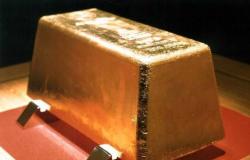Large reserves of gold, diamonds and bauxite, the main component of aluminium. But also oil, timber and endless cocoa plantations, which still make it the second largest producer in the world. Ghana – the first sub-Saharan country to become independent in 1957 – could count on these and many other natural resources when even a decade ago it was considered a rare success story among African economies. A double-digit GDP growth, increasing exports and a certain stability at the political level also made it a governance model for the continent. The ingredients to aim for widespread development and the improvement of basic services, from schools to healthcare, were all there. Yet, a few years later, we are telling another story, that of a country which, with an economy that defaulted in December 2022, can no longer find a way out of its debt crisis.
Between the global increase in interest rates, the surge in inflation (+54% in 2023) triggered by the pandemic and the war in Ukraine and with out-of-control public spending, the Accra government found itself with 30 billion in the space of 15 years dollars of external debt, 40% of which is in the hands of international private creditors such as BlackRock and Amundi, and another 34 billion of internal debt. Debts that the local authorities are now trying to restructure together with the International Monetary Fund also to regain credibility on the international markets and be able to start again, but the road has so far proved to be quite tortuous. Indeed, Ghana is a perfect example of how much effort the Common Framework makes, the initiative adopted by the G20 together with the Paris Club to provide structural solutions to low-income countries with unsustainable levels of debt.
After the default, which occurred due to the impossibility of repaying the debt, a 3 billion dollar bailout plan was prepared for Ghana by the IMF, essentially a new staggered loan conditioned on a series of macroeconomic reforms to recover the public accounts and a restructuring of the existing debt decided thanks to the yes of the creditors. Among the conditions set, however, is a fairly new one: that of first repaying the internal debt – contracted by local banks, pension funds and insurance companies – and only then the external debt, to try to breathe new life into the local economy. In the meantime, strenuous negotiations have begun with international private creditors, holders of approximately 13 billion dollars in Ghanaian bonds, and with bilateral creditors. In January, an agreement was reached with the latter for an amount of 5.4 billion (including China with 1.9 billion), a step underlined by the signing of a memorandum in recent days and which has spread optimism.
In April, however, there was a significant cold shower: for the IMF, the draft agreement with private creditors is not enough to reduce Ghana’s debts to a sustainable level. The Ghanaian authorities had proposed, among other things, to private creditors a cut of one third of the nominal value of the interest already accrued or, alternatively, the issue of bonds maturing in 2043 without a “haircut” and with a coupon of 1.50 %. Without an agreement with private creditors and without the green light from the IMF board, the second tranche of the 3 billion loan from the IMF itself remains blocked for Ghana, a tranche of 360 million dollars which would be added to the first of 900 million received in January.
In parallel with debt settlement, the government in Accra led by President Nana Akufo-Addo had to implement measures designed to increase tax revenues and revitalize the economy, measures which however had a significant impact on the lives of tens of thousands of Ghanaians who were already struggling to make ends meet. Rising prices have ended up eroding purchasing power, as companies face higher costs and reduced demand. A World Bank report estimates that another 850,000 Ghanaians have fallen into poverty with double-digit inflation, while GDP, which fell by 1.7% last year, will not go beyond +3% this year. Anti-government protests have thus multiplied in the last two years and tension is set to increase in view of the December elections, when former president John Mahama will challenge the current vice-president Mahamadu Bawumia.
Paradoxical, among other aspects, that Ghana, which produces 170 thousand barrels of crude oil per day, is forced to import billions of dollars in fuel every year. And there is no program in sight – the construction of refineries, for example – to reverse this prospect. This is how Ghana, defined as “the shining star of the African economy” by the World Bank just five years ago, finds itself at the most complicated crossroads. The debt trap does not allow large investments today, while even a sector such as agriculture, which represents 21% of the GDP and provides 90% of the country’s food needs, has not enjoyed the attention necessary for an increase in production and of added value. The wait for decisions taken at an international level is all that remains of a time in which we were able to imagine a different future.





